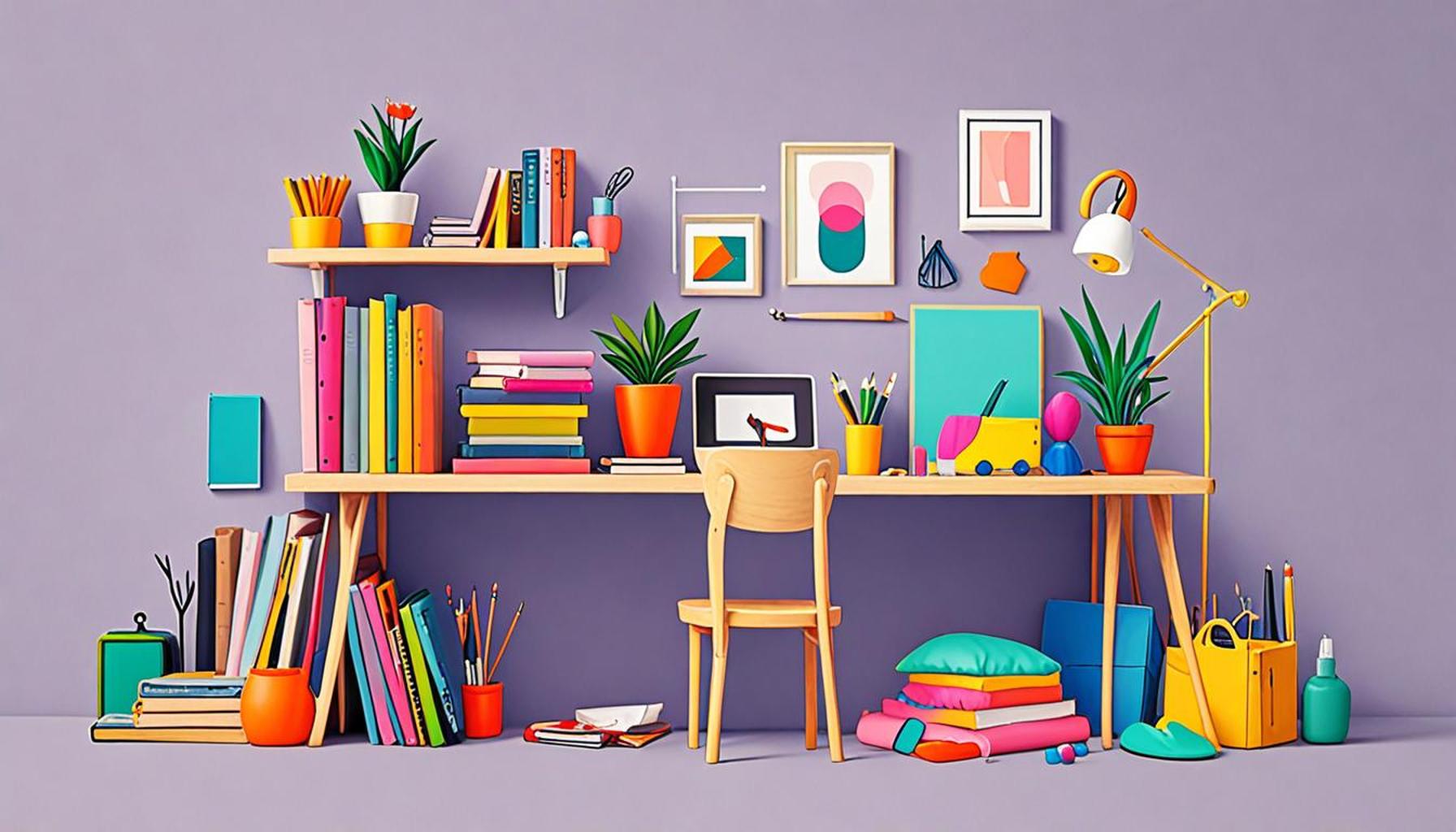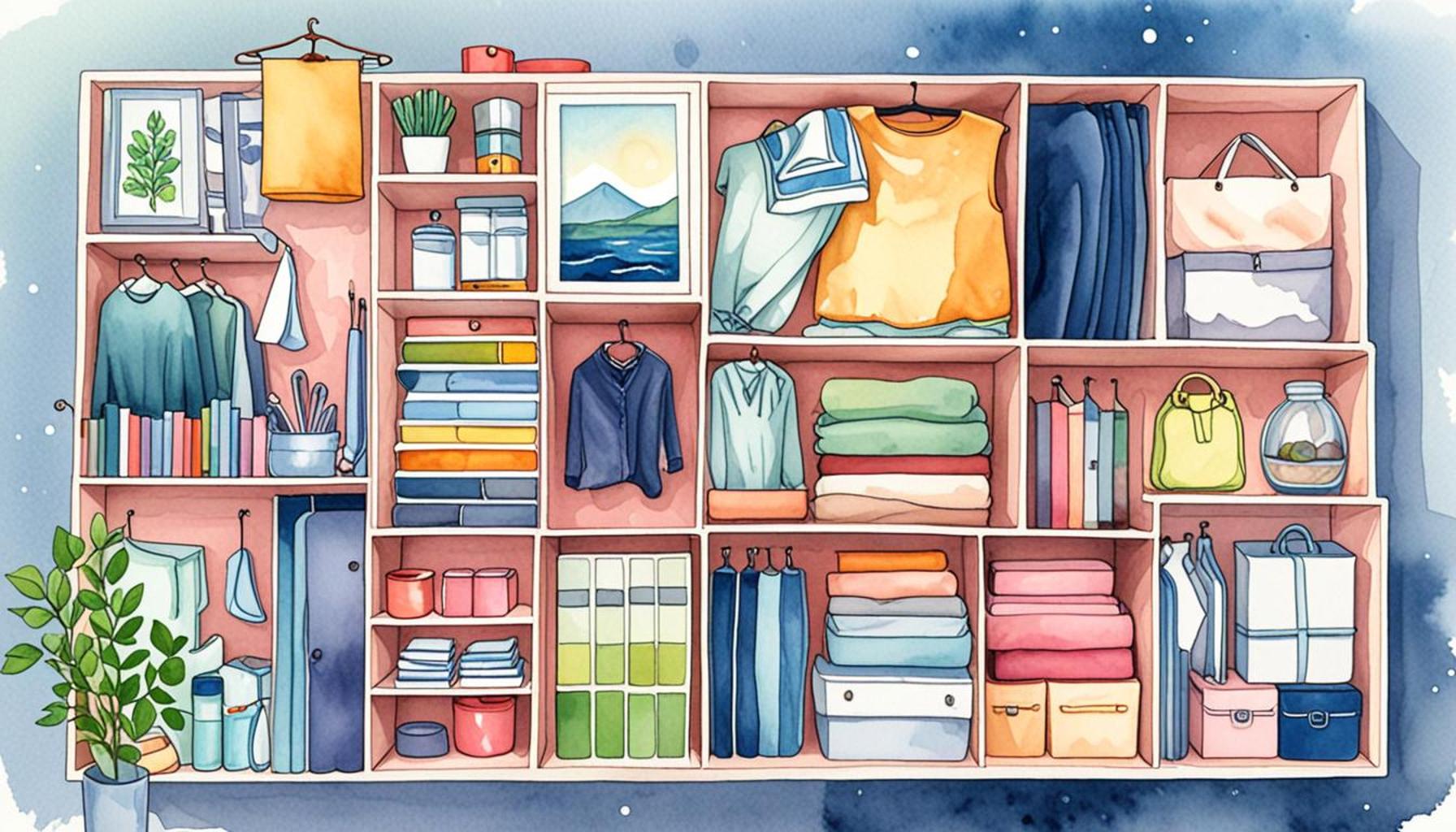Demystifying Minimalism: Decluttering Strategies for Small Spaces

Understanding Minimalism in Small Living Spaces
Minimalism is more than just a trend; it’s a profound lifestyle revolution that advocates for simplicity and intentionality in living. For many, it evokes images of clean lines, muted colors, and open spaces filled with light. However, the journey to achieving a minimalist environment—especially in small spaces—can often feel overwhelming, requiring both strategic planning and a willingness to part with excess belongings.
Why consider minimalism? Embracing this philosophy can lead to transformative benefits that enhance your daily life. Here are some compelling reasons:
- Reduced Stress: Research suggests that fewer possessions lead to a more serene atmosphere. A tidy environment can significantly lower anxiety levels and improve overall mental health, allowing you to feel more at ease in your surroundings.
- Increased Functionality: In a minimalist space, every item serves a purpose. This focus on functionality means that your home is both practical and enjoyable to navigate, making daily tasks easier and more efficient.
- Financial Freedom: Adopting a minimalist lifestyle often results in less shopping. With fewer items to purchase, individuals can redirect their finances towards experiences or long-term goals rather than material possessions.
In bustling urban environments across the United States, many face the challenge of limited living space. Small apartments or tiny homes can become cluttered quickly, transforming cozy living into a constant battle against chaos. Therefore, embracing minimalism becomes essential for those looking to reclaim their space.
Embracing Minimalism with Practical Strategies
So, how can you effectively embrace minimalism? Implementing the following strategies can aid you in creating a more intentional living space:
- Assess Your Belongings: Begin by evaluating what you truly need versus what you want. Consider applying the “one-year rule,” where if you haven’t used an item in the past year, it may be time to let it go. This exercise encourages mindful ownership.
- Organize by Category: Group similar items together to see just how much you own. For instance, gathering all your shoes in one place may reveal that you don’t need ten pairs, thus encouraging you to donate or sell the extras.
- Use Multi-Functional Furniture: Invest in pieces that maximize utility without sacrificing space. For example, a coffee table that doubles as storage or a bed with built-in drawers can significantly enhance your small living space’s effectiveness.
This guide aims to unravel the mysteries of minimalism, providing you with practical decluttering strategies tailored specifically for small spaces. By implementing these techniques, you can transform your home into a haven of simplicity and efficiency, ultimately enriching your lifestyle and promoting a sense of calm amid the busyness of modern life. Whether you are just beginning your minimalist journey or seeking to refine your approach, every small change contributes to a larger narrative of intentionality and peace.
DIVE DEEPER: Click here to discover the steps to a minimalist life
Core Principles of Minimalism and Their Application
Minimalism is grounded in the principle of letting go—of distractions, superfluous items, and mental clutter. This can be especially liberating for those inhabiting small spaces, where every inch counts. By adopting minimalism, you begin to shift your focus from quantity to quality, valuing each item’s significance in your life. To embark on this transformative journey, consider the following core principles of minimalism that align perfectly with decluttering strategies for small spaces:
- Intentional Living: Every item in your home should serve a purpose or hold sentimental value. This mindset encourages you to be more thoughtful about new acquisitions. When entering a store, ask yourself if an item will genuinely enhance your life or simply add to the clutter.
- Less Is More: The notion of “less is more” underlines the minimalist philosophy. By reducing the number of items in your space, you open up opportunities for creativity and functionality. This means investing in a few high-quality pieces rather than a collection of low-quality ones.
- Mindful Consumption: Consciously consider the items you bring into your small living space. Practicing mindful consumption not only helps in minimizing clutter but also fosters a more sustainable lifestyle. Emphasize purchasing from local or eco-friendly companies to further align with these values.
To successfully navigate the decluttering process in a limited area, a strategic and systematic approach is essential. Here are some effective methods to consider:
Step-by-Step Decluttering Techniques
Taking steps to declutter may seem daunting, especially when faced with the emotional weight of letting go. However, structuring the process can lead to a significant breakthrough in achieving a minimalist lifestyle:
- The Four-Box Method: Designate four boxes labeled “Keep,” “Donate,” “Sell,” and “Trash.” As you go through your belongings, place each item in one of the boxes. This visual organization can help provide clarity and determination to part with unnecessary items.
- Time-Boxing: Allocate specific time frames for decluttering sessions—short, focused bursts of effort can be less overwhelming than attempting a complete overhaul in one go. For instance, dedicate just 15-30 minutes each day to tackle one category at a time, such as clothing or books.
- The Digital Declutter: While focusing on physical items is vital, don’t forget about digital clutter. A disorganized digital space can have a similar mental impact. Regularly clear out old emails, files, and photos to maintain a streamlined digital life.
By employing these techniques, you can reclaim control over your space, transforming it into a sanctuary of minimalism. As you progress through the decluttering adventure, remember that the goal is not just to create a visually appealing environment but also to cultivate a lifestyle centered around harmony and intentionality. Each effort you make toward minimalism can contribute to a richer, more fulfilling life amidst the pressures of contemporary obligations.
Demystifying Minimalism: Decluttering Strategies for Small Spaces
When it comes to minimalism, the idea may seem intimidating at first glance, especially for those living in small spaces. However, a thoughtful approach to decluttering can transform your environment, creating a more peaceful and functional home. Embracing minimalism does not necessarily mean sacrificing style or comfort; instead, it’s about prioritizing what truly matters and letting go of the excess.
The first step in a successful minimalism journey involves assessing your possessions. Start by categorizing your items into three distinct groups: keep, donate, and discard. This approach not only simplifies your decision-making process but also provides a visual representation of the space you can reclaim. Remember, each item you choose to keep should bring you joy or serve a practical purpose in your daily life.
Utilizing clever storage solutions is another vital aspect of minimalism in small spaces. Invest in multi-functional furniture, such as ottomans with hidden storage or bed frames that can hold extra linens. These pieces help maintain an organized and clutter-free environment while maximizing the use of available space.
Furthermore, shine a light on your walls! Vertical storage solutions such as shelves can keep your floor space clear while adding an aesthetic appeal. Displaying decorative items or books can infuse your area with personality without contributing to the chaos often found in cluttered spaces.
Lastly, consider establishing a routine for maintaining minimalism in your home. Designate a specific time each month for decluttering, whether it’s a simple tidy-up or serious re-evaluation of your possessions. This regular practice keeps clutter from building up and helps reinforce your commitment to a minimalist lifestyle.
| Strategies | Advantages |
|---|---|
| Categorization of Items | Helps in making informed decisions about what to keep, donate, or discard. |
| Utilizing Multi-Functional Furniture | Maximizes space and enhances functionality while maintaining style. |
| Vertical Storage Solutions | Creates open floor space and displays personal style. |
| Regular Decluttering Routine | Prevents accumulation of clutter, ensuring a consistently minimalist environment. |
In conclusion, the journey towards a minimalist lifestyle is both rewarding and practical. By implementing these strategies focused on decluttering small spaces, anyone can enhance their living areas and find the tranquility that comes with a well-organized home. Remember, it’s not about living with less, but about making room for what is truly valuable.
DISCOVER MORE: Click here for tips on organizing small spaces
Creative Storage Solutions for Small Spaces
For those living in small spaces, effective storage solutions play a pivotal role in the clutter-free lifestyle that minimalism champions. Innovatively maximizing every square inch not only enhances the aesthetic appeal of your home but also contributes to a seamless flow in your daily activities. Here are some creative storage strategies that align with the principles of minimalism:
- Multi-Functional Furniture: Invest in furniture that serves more than one purpose. For instance, a sofa bed doubles as both seating and sleeping space, while ottomans that contain storage are perfect for stowing away blankets or magazines. This approach not only reduces the number of items in your space but also makes those items work harder for you.
- Vertical Storage: Take advantage of vertical space in your small area. Wall shelves, tall bookcases, or hanging storage systems can creatively house your belongings without occupying precious floor space. Additionally, consider installing hooks or pegboards in the kitchen or entryway for hanging items like pots, utensils, or coats. Vertical storage solutions can transform any wall into an efficient organizational tool.
- Under-Bed Storage: The area under your bed is often underutilized and can be a prime location for storage. Use storage bins, drawers, or vacuum-sealed bags to keep seasonal clothing, shoes, or extra bedding out of sight while still easily accessible. By utilizing this often-overlooked space, you not only free up your living area but also keep the items neatly tucked away.
Embracing the 80/20 Rule
A significant aspect of minimalist living revolves around understanding the 80/20 rule, also known as the Pareto principle, which states that 80% of our outcomes often come from 20% of our efforts. In terms of decluttering, this principle emphasizes evaluating the items most frequently used versus those that contribute little to our daily lives:
- Identify Essentials: Conduct a thorough review of your belongings to pinpoint the key items that you use consistently. This may be clothing that you wear regularly, tools that aid in your hobbies, or kitchen gadgets you find indispensable. By honing in on these essential items, you can comfortably let go of the remaining 80% that don’t serve a vital role in your life.
- Regular Reviews: Incorporate a habit of regular reviews of your belongings to avoid accumulation. Set a timeline—perhaps every three or six months—to reassess your possessions. Maintaining a habit of decluttering ensures that your space remains aligned with your minimalist values.
- Seasonal Switch-Ups: Rotate seasonal items such as clothes, holiday decorations, or sports gear to keep only what is relevant and actively used. This practice not only simplifies your living environment but also prepares you for what you need when the seasons change.
Utilizing Technology
In today’s fast-paced world, technology can greatly assist in achieving minimalism in both physical and digital realms. The rise of applications and tools specifically designed to simplify organization is a boon for those residing in small spaces:
- Declutter Apps: Consider using decluttering apps to create an inventory of your belongings. Applications such as Sortly or Clutterfree present visual catalogs that make tracking items easier and help inform your decisions on what to keep or discard.
- Smart Home Devices: Smart home technology can streamline your daily tasks, reducing the time spent managing tasks and items. Devices like smart lights and thermostats not only declutter physical space but also eliminate the need for numerous controllers or remotes.
- Virtual Minimalism: As previously mentioned, digital decluttering is as crucial as physical decluttering. Utilize cloud storage solutions or digital organization tools to minimize the clutter in your digital life. By creating an efficient digital environment, you reduce mental clutter and create a clearer workspace.
By incorporating these innovative strategies and principles into your decluttering journey, you empower yourself to curate an organized and intentional living space. Minimalism in small spaces is achievable and sustainable, allowing you to embrace the freedom of a well-curated life.
DISCOVER MORE: Click here to learn about the impact of consciousness on sustainable choices
Conclusion: Embrace the Minimalist Mindset
As we journey through the landscape of minimalism, it becomes clear that decluttering is not merely about discarding excess; it is about cultivating a mindful approach to our living environments, especially in small spaces. By implementing the strategies discussed, from utilizing creative storage solutions to embracing the 80/20 rule, individuals can create functional and aesthetically pleasing homes that reflect their true needs and values.
The fusion of practical solutions—like multi-functional furniture and vertical storage—with modern tools such as decluttering apps and smart home technology underscores the evolving nature of minimalism. This dual approach not only enhances our physical surroundings but also contributes to a mental clarity often overlooked. In a world saturated with consumer goods and excessive choices, remaining intentional about what we keep and how we organize is essential.
Moreover, the practice of regular evaluations and seasonal switch-ups plays a crucial role in preventing the reaccumulation of clutter. Minimalism thrives on the principle of intentional living, wherein every item serves a purpose or brings joy. As you embrace these principles, consider the impact of digital minimalism as well. Streamlining both your physical and digital spaces can dramatically reduce feelings of overwhelm.
Ultimately, demystifying minimalism reflects a deeper connection to personal well-being. By taking actionable steps towards decluttering and simplifying our lives, we open ourselves up to a more fulfilling, focused, and liberated existence. This journey toward a clutter-free life is not a one-time event but a continuous practice of mindfulness and intentionality.


